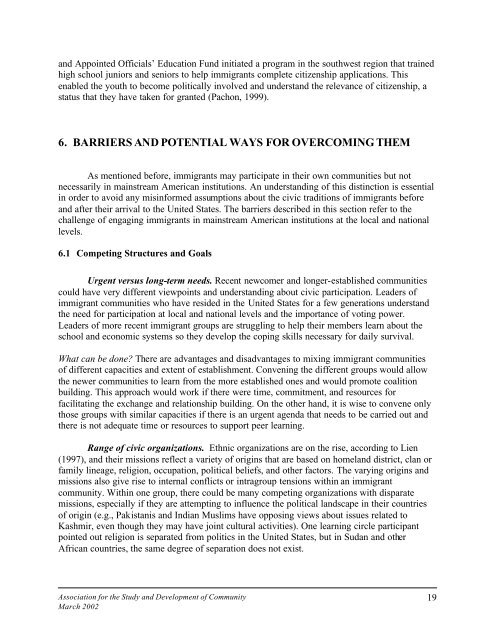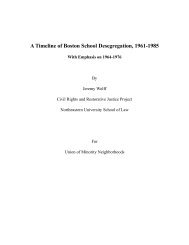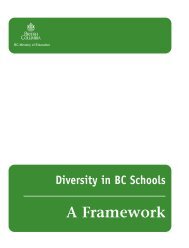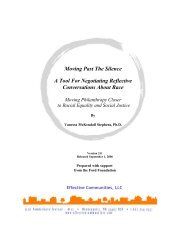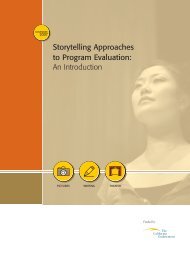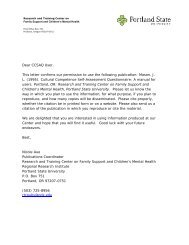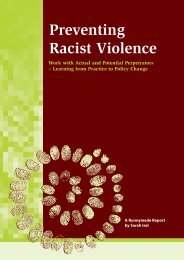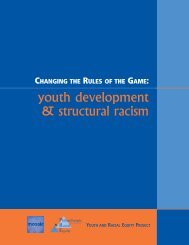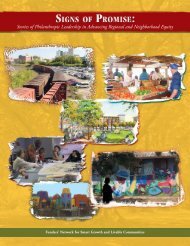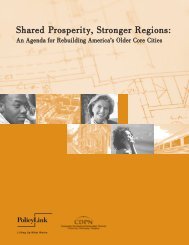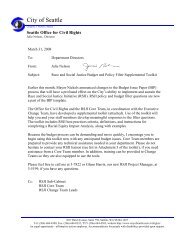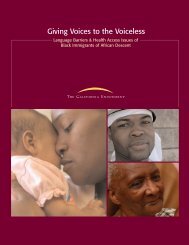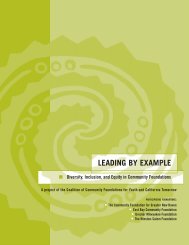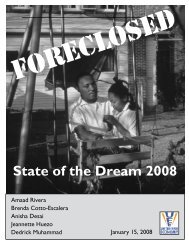lessons learned about civic participation among immigrants
lessons learned about civic participation among immigrants
lessons learned about civic participation among immigrants
You also want an ePaper? Increase the reach of your titles
YUMPU automatically turns print PDFs into web optimized ePapers that Google loves.
and Appointed Officials’ Education Fund initiated a program in the southwest region that trainedhigh school juniors and seniors to help <strong>immigrants</strong> complete citizenship applications. Thisenabled the youth to become politically involved and understand the relevance of citizenship, astatus that they have taken for granted (Pachon, 1999).6. BARRIERS AND POTENTIAL WAYS FOR OVERCOMING THEMAs mentioned before, <strong>immigrants</strong> may participate in their own communities but notnecessarily in mainstream American institutions. An understanding of this distinction is essentialin order to avoid any misinformed assumptions <strong>about</strong> the <strong>civic</strong> traditions of <strong>immigrants</strong> beforeand after their arrival to the United States. The barriers described in this section refer to thechallenge of engaging <strong>immigrants</strong> in mainstream American institutions at the local and nationallevels.6.1 Competing Structures and GoalsUrgent versus long-term needs. Recent newcomer and longer-established communitiescould have very different viewpoints and understanding <strong>about</strong> <strong>civic</strong> <strong>participation</strong>. Leaders ofimmigrant communities who have resided in the United States for a few generations understandthe need for <strong>participation</strong> at local and national levels and the importance of voting power.Leaders of more recent immigrant groups are struggling to help their members learn <strong>about</strong> theschool and economic systems so they develop the coping skills necessary for daily survival.What can be done? There are advantages and disadvantages to mixing immigrant communitiesof different capacities and extent of establishment. Convening the different groups would allowthe newer communities to learn from the more established ones and would promote coalitionbuilding. This approach would work if there were time, commitment, and resources forfacilitating the exchange and relationship building. On the other hand, it is wise to convene onlythose groups with similar capacities if there is an urgent agenda that needs to be carried out andthere is not adequate time or resources to support peer learning.Range of <strong>civic</strong> organizations. Ethnic organizations are on the rise, according to Lien(1997), and their missions reflect a variety of origins that are based on homeland district, clan orfamily lineage, religion, occupation, political beliefs, and other factors. The varying origins andmissions also give rise to internal conflicts or intragroup tensions within an immigrantcommunity. Within one group, there could be many competing organizations with disparatemissions, especially if they are attempting to influence the political landscape in their countriesof origin (e.g., Pakistanis and Indian Muslims have opposing views <strong>about</strong> issues related toKashmir, even though they may have joint cultural activities). One learning circle participantpointed out religion is separated from politics in the United States, but in Sudan and otherAfrican countries, the same degree of separation does not exist.Association for the Study and Development of CommunityMarch 200219


